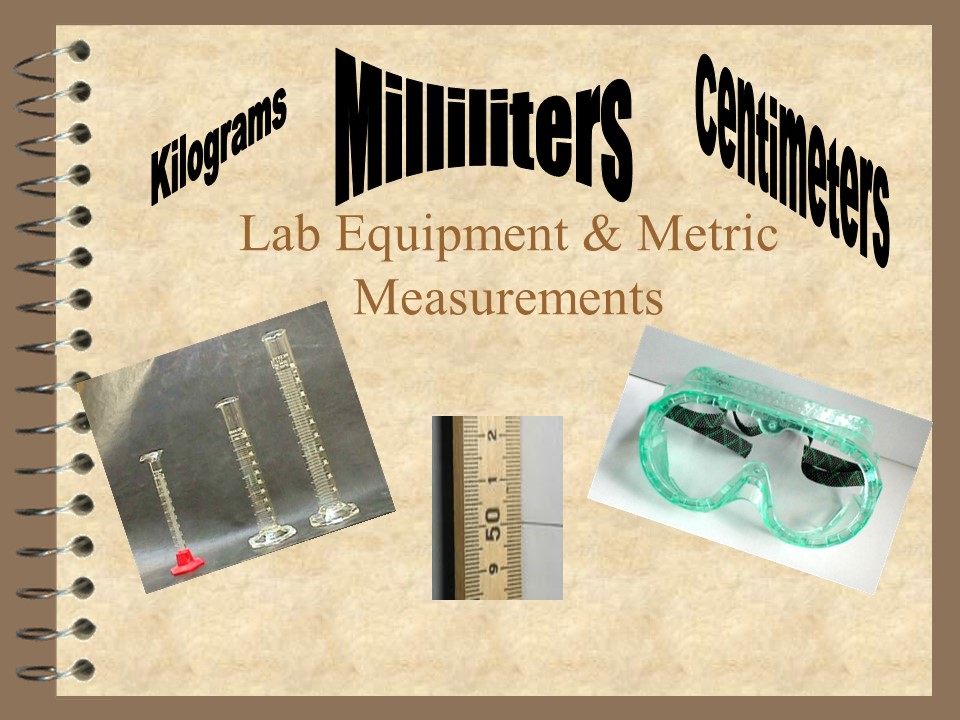Lab Equipment - PowerPoint PPT Presentation
Title:
Lab Equipment
Description:
Types of Measurements & Equipment used Type of measurement Equipment Used Metric Units Length Meter Stick/Ruler ... Precision vs Accuracy Accuracy-how close ... – PowerPoint PPT presentation
Number of Views:119
Avg rating:3.0/5.0
Title: Lab Equipment
1
Lab Equipment Metric Measurements
Centimeters
Milliliters
Kilograms
2
Types of Measurements Equipment used
Type of measurement Equipment Used Metric Units
Length Meter Stick/Ruler meters (m),centimeters (cm) millimeters (mm)
Volume Graduated Cylinder Beaker, Erlenmeyer Flask Pipettes Eye Droppers Test Tubes Milliliters (mL), Liters(L)
Mass Triple beam balance Grams (g), Centigrams (cg), Milligrams (mg)
Time Timer/Stopwatch Seconds (s)
Temperature Thermometer Celsius (C), Kelvin (K)
3
Lab Equipment
- Misc-Heating Set-up/use-Bunsen Burner, Wire gauze
squares, Ring Stand, Ring, beaker tongs, glass
stirring rods - Misc-Test tube setup/use-Test tube rack, test
tube clamp, Test tube tongs, Test tube brush - Microscope equipment-Microscope, foreceps, glass
slides, coverslips (plastic/glass), lens paper
4
Units of Measurement-Metric vs Standard
- Measuring in the International System
- Standard system of measurement aka English system
(i.e inches, pounds, Fahrenheit,etc.) - Scientists around the world use the International
System of Measurements (SI units) - Advantages of SI units
- Few basic units
- Nearly all measurements can be expressed in these
units or combos of these units - Decimal system that uses a prefix system (King
Henry Did Drink Chocolate Milk)
5
Uncertainty
- Scientific measurements will always have some
uncertainty b/c of people instruments - Scientists try to reduce errors by
- using standard procedures
- calibrating measuring devices
- Repetition find average value
6
Precision vs Accuracy
- Precision-def- a measure of reproducibility or
how closely a series of measurements of the same
quantity agree with one another - Accuracy-def-how well a measurement conforms to
the accepted corrected value for the measured
quantity, based on many careful measurements made
over a long time.
7
Precision vs Accuracy
Accuracy-how close darts get to
bulls-eye Precision-depends on how close the
darts are to each other Note- good precision is
necessary for accuracy but does not guarantee it































